Pyrenees Workshop
Gavarnie is one of the best known areas in the French Pyrenees. Its unspoilt natural beauty is a haven for wildlife and of course tourists. Walking along the track that leads to the Cirque is awash with colour from the woodlands and flower meadows that line the route towards the snow-capped peaks that form the large amphitheatre known Cirque de Gavarnie. The 422 metre waterfall is said to be the largest in France.
Nikon D800, 24-70mm lens, panoramic base, tripod.
The French Pyrenees has always been a location high on my list of destinations. The majestic mountains with their many rivers, splendid waterfalls and meadows suffused with insects and wild flowers are without doubt a photographer’s paradise.
Running a workshop in a location such as this provides the photographer with a diversity of material that few other places could match. If we had been the previous week, things could have been very different. The region got 2 months rain in a single week, wrecking roads, demolishing houses and cutting off villages in some of the valleys. This made a few locations a bit more challenging to get to. In some cases, due to roads completely collapsing, other target areas were not possible on this occasion. During our stay, we had temperatures hitting the high twenties virtually every day. The clear blue skies that we awoke to every morning and the intense glare made photography extremely challenging at times. However, we still managed to produce some really splendid images. Below are a small sample from our stay in the Gavarnie region of the Hautes Pyrenees. I will be writing up a full account of the workshop in not too distant future.
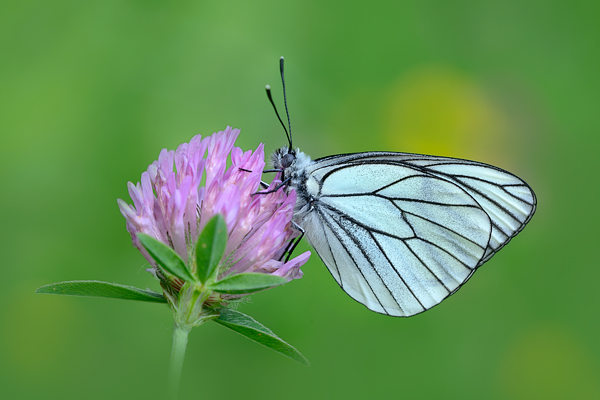
Black-veined White Aporia-crataegi
The Black-veined White is one of my favourite butterflies. We encountered them frequently in many places during our stay and were relatively easy to approach in the early evening.
Nikon D800, 200mm macro, fill flash, tripod.
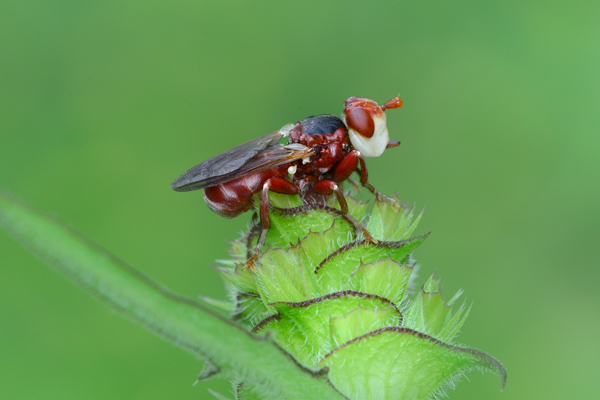
Conopid Fly Myopa buccata
Conopids are curious looking insects and not that easy to approach. This is an impressive species however, I only managed a single shot before it took off and dropped into the vegetation. Despite searching for several minutes I could not locate it again.
Nikon D800, 200mm macro, fill flash, tripod.
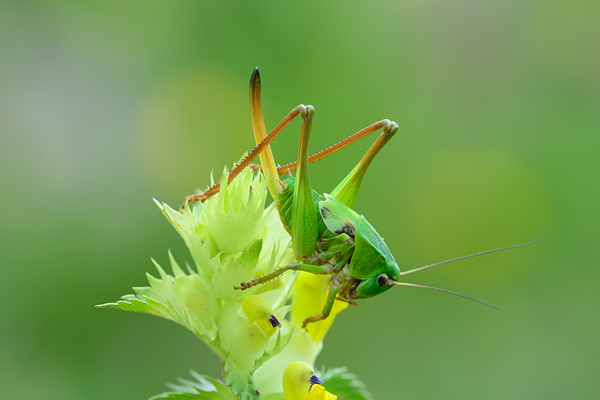
Wart-biter Decticus verrucivorus
The meadows abound with many different types of crickets and grasshoppers. This species is one of the best-known and photographed.
Nikon D800, 200mm macro, fill flash, tripod.
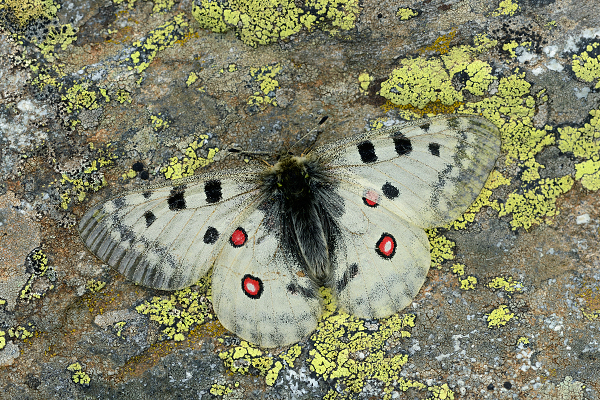
Apollo Parnassius apollo
One of the target butterflies this trip was the Apollo – an amazing species and difficult to confuse with any other white. We saw well over 40 species of butterfly, numerous moths and other small insects despite the unseasonable weather that many areas had this year. The apollo is a species that is pretty tolerant of approaching photographers.
Nikon D800, 200mm macro, fill flash, tripod.
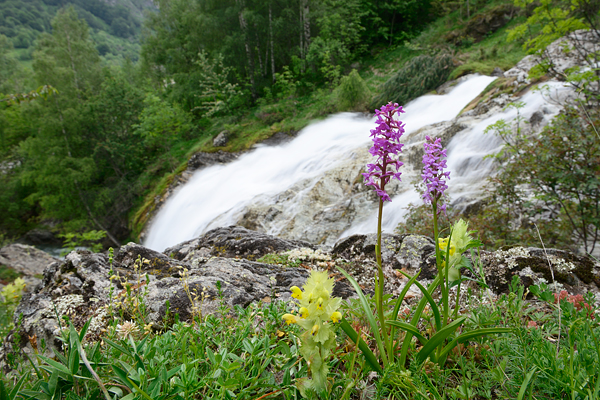
Fragrant Orchid Gymnadenia conopsea & Yellow Rattle Rhinanthus minor
The most common orchid by far this trip was Fragrant Orchid Gymnadenia conopsea, which was prolific in some areas. This group had a nice backdrop of a nearby waterfall, which made the image more appealing.
Nikon D800, 24-70mm lens, tripod.
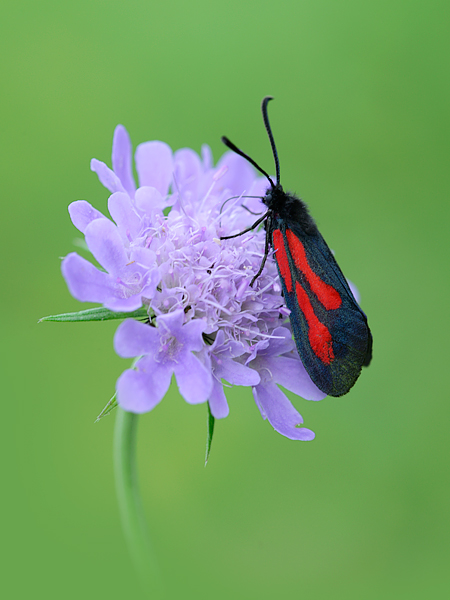
Zygaena osterodensis
We saw a number of attractive moths, but the Burnetts were particularly interesting. This adult is nectaring from the scabious flower in a meadow.
Nikon D800, 200mm macro, fill flash, tripod.
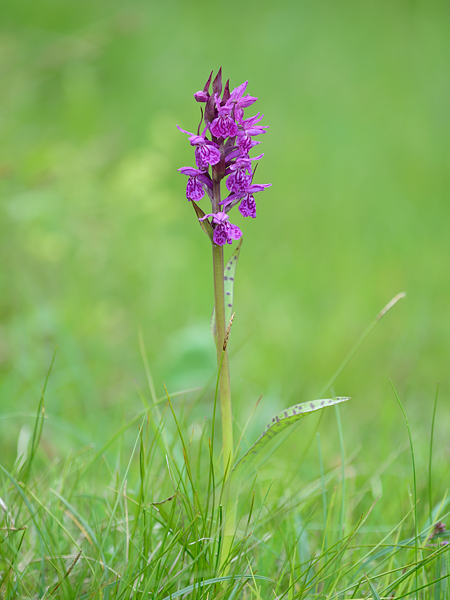
Alpine Marsh Orchid Dactylorhiza alpestris
This orchid was frequently seen in a number of small flushes along the roadside margins. This particular specimen was more isolated and not embedded deep in the vegetation, which allowed me to keep the background well diffused.
Nikon D800, 200mm macro, fill flash, tripod.

Common Frog Rana temporaria
I was photographing butterworts, which were flowering among the wet seepages in the rock face when I spotted this tiny frog resting in the quieter part of this small stream. The angle and composition was a lot more challenging that it would appear from the photograph. Water was constantly flowing from a higher rock above my head, which meant virtually wiping heavy spray from the camera every minute or so. In order to achieve the composition it meant placing the camera virtually a few inches above the stream without disturbing the frog. I did actually fall in at the end slipping on the rock and had to endue rather wet pants for the remainder of the day.
Nikon D800, 24-70mm lens, fill flash, tripod.
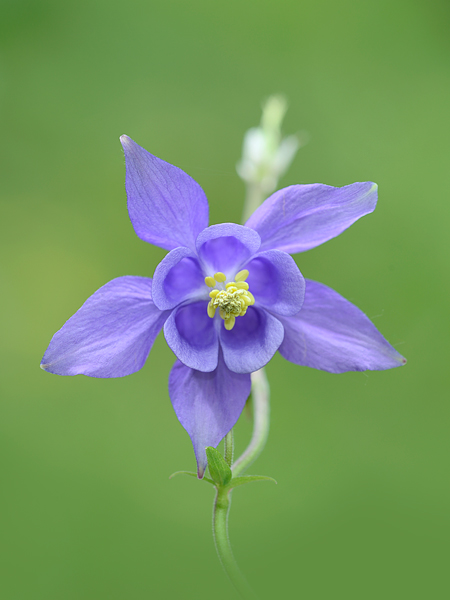
European Columbine Aquilegia vulgaris
This plant was widespread in most places, but challenging to photograph due to its constant quivering, even in the most gentle of breezes.
Nikon D800, 24-70mm lens, fill flash, tripod.
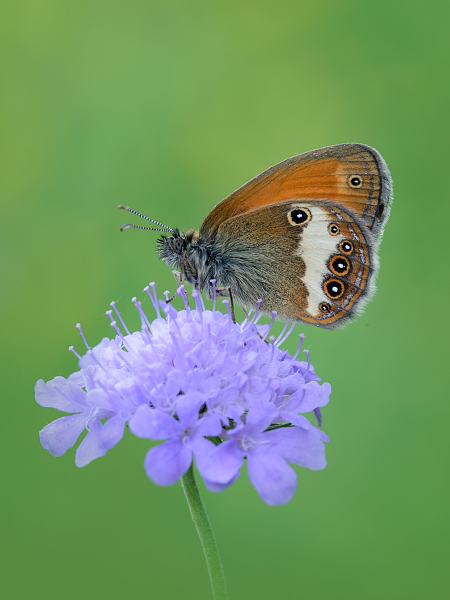
Pearly Heath Coenonympha arcania
This butterfly was another target species and one I was very eager to see and photograph. We found it only at one location near Viscos.
Nikon D800, 200mm macro, fill flash, tripod.
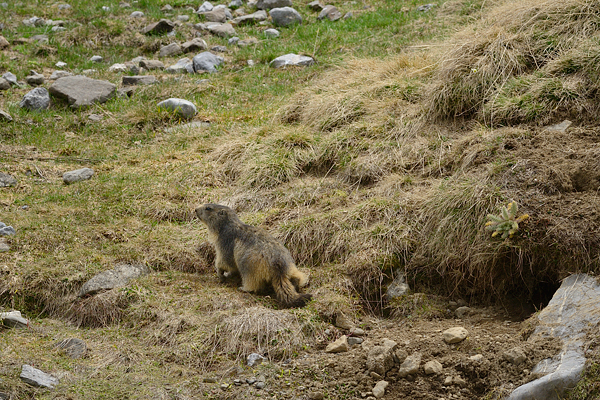
Alpine Marmot Marmota marmota
These delightful creatures were often heard but not that easily seen. They are extremely shy and wary of any potential danger. We were heading up the Vallée des Espéciéres when I spotted this adult some distance away. On seeing the vehicle it ran at full speed back to its burrow, which was in close proximity to the road. After turning off the engine and waiting for about 15 minutes, it reappeared briefly for a few moments allowing us to get a couple of shots before racing across the rocky terrain to rejoin the group some distance away. We did get several other opportunities to see and photograph them in other areas.
Nikon D800, 200mm, handheld.
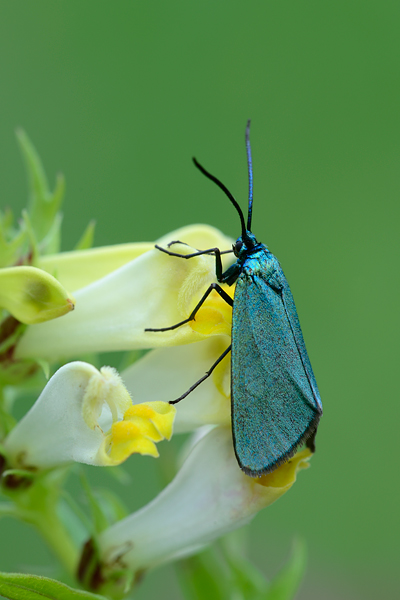
Scarce Forester Jordanita globulariae
Both the Forester and Scarce Forester moths were seen during the workshop. The latter was more commonly encountered usually among the roadside flowers.
Nikon D800, 200mm macro, fill flash, tripod.
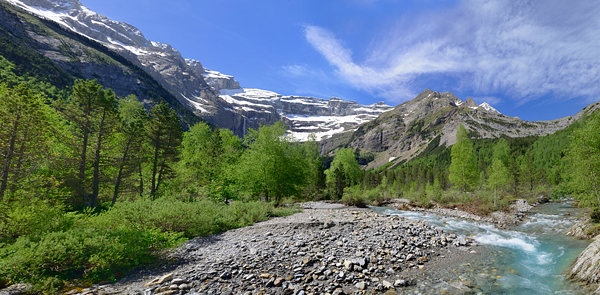
Cirque de Gavarnie
The track to the Cirque takes about an hour but if you plan on walking to the waterfall this adds another hour to your journey. A 24mm lens was insufficient here to cover the whole scene. I used a panoramic base and 6 images to achieve the composite photograph.
Nikon D800, 24-70mm lens, panoramic base and tripod.
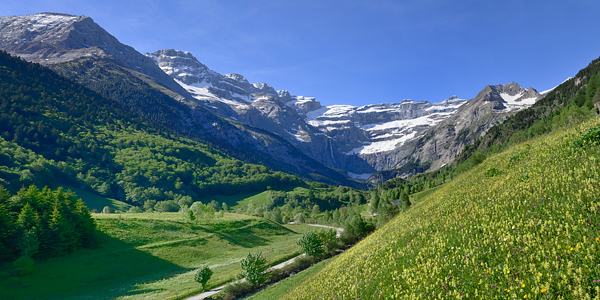
Cirque de Gavarnie
Its difficult to do justice to the scene without having to break sweat and climb up through some steep meadows in order to gain sufficient height. The flowers were at their best and provided contrasting colour to the foreground.
Nikon D800, 24-70mm lens, panoramic base and tripod.
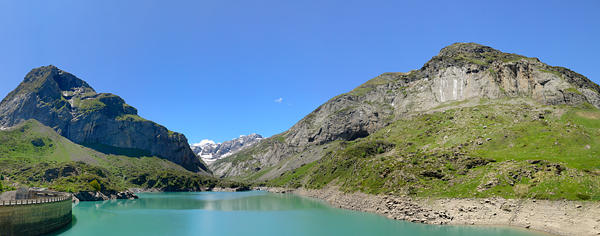
Lac de Gloriettes
This is a popular place for walkers and offers some very dramatic scenery in the valley beyond the dam. It is rich in plants and butterflies. The valley is impressive with rivers, cascading waterfalls and great views of Cirque de Troumouse.
Nikon D800, 24-70mm lens, panoramic base and tripod.
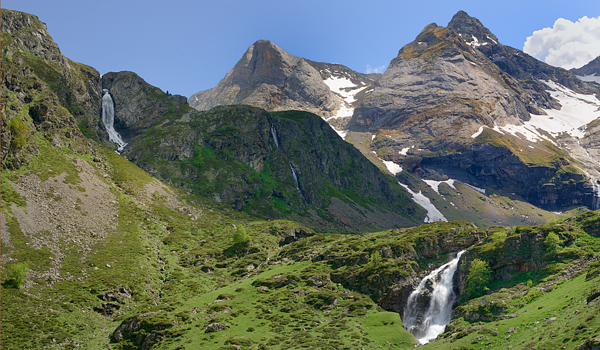
River Touyeres Le cirque de Troumouse
The road up to the Cirque de Troumouse is dramatic with many suitable photographic locations at virtually every bend in the road. In some locations its worth walking well off the road to reveal some unexpected surprises.
Nikon D800, 24-70mm lens, tripod.
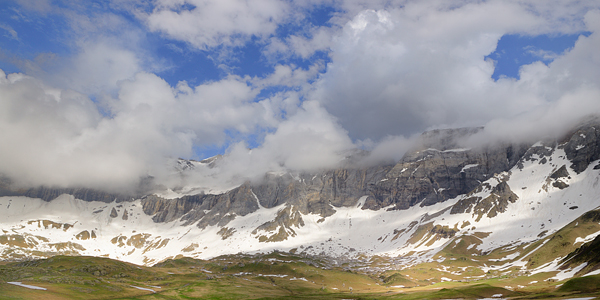
Le cirque de Troumouse
From the car park at the end of the road, it’s a short walk over to a small hill overlooking the cirque, which is over 3000 m high.
Nikon D800, 24-70mm lens, panoramic base and tripod.
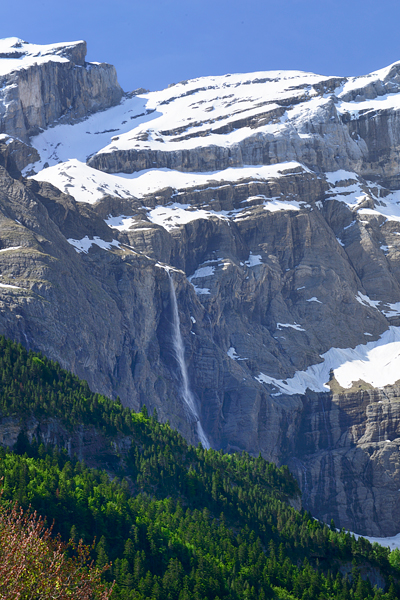
Grande Cascade de Gavarnie
The Grande Cascade de Gavarnie is reported to be the highest waterfall in France with an overall drop of 422m.
Nikon D800, 24-70mm lens, tripod.
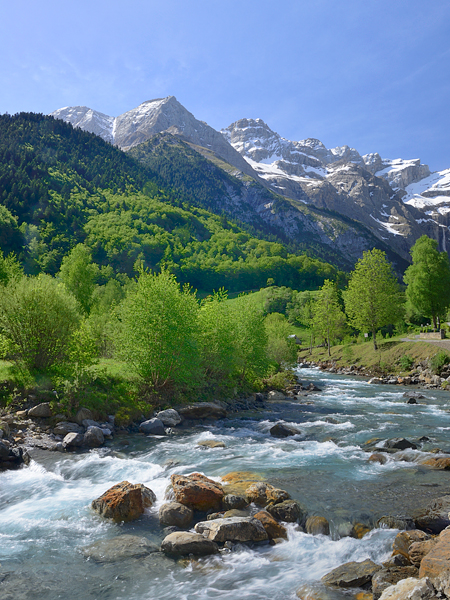
Gave de Pau River
The track along the river provides some excellent locations for photography with the cirique adding a dramatic backdrop to the composition.
Nikon D800, 24-70mm lens, tripod.
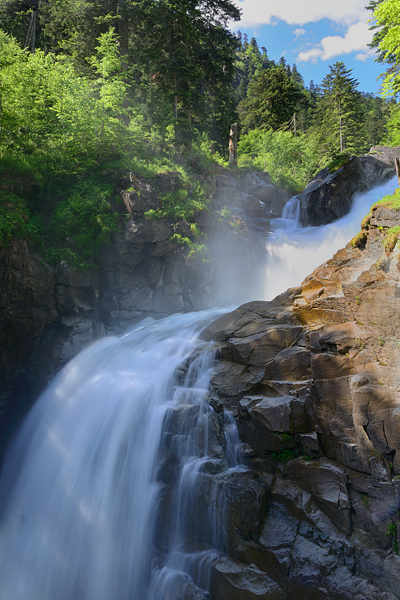
Cascade du Cerisey, Cauretris

